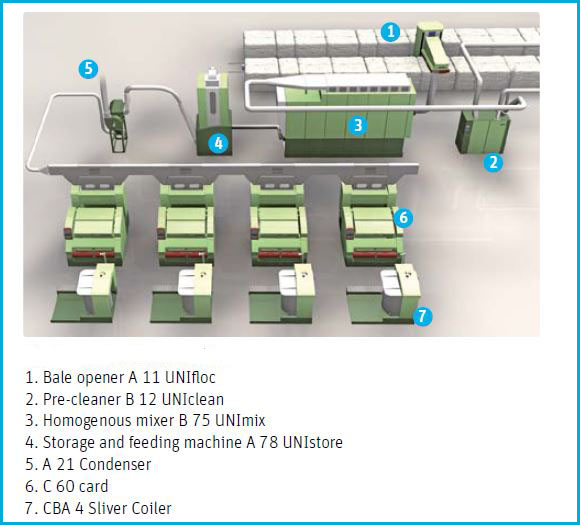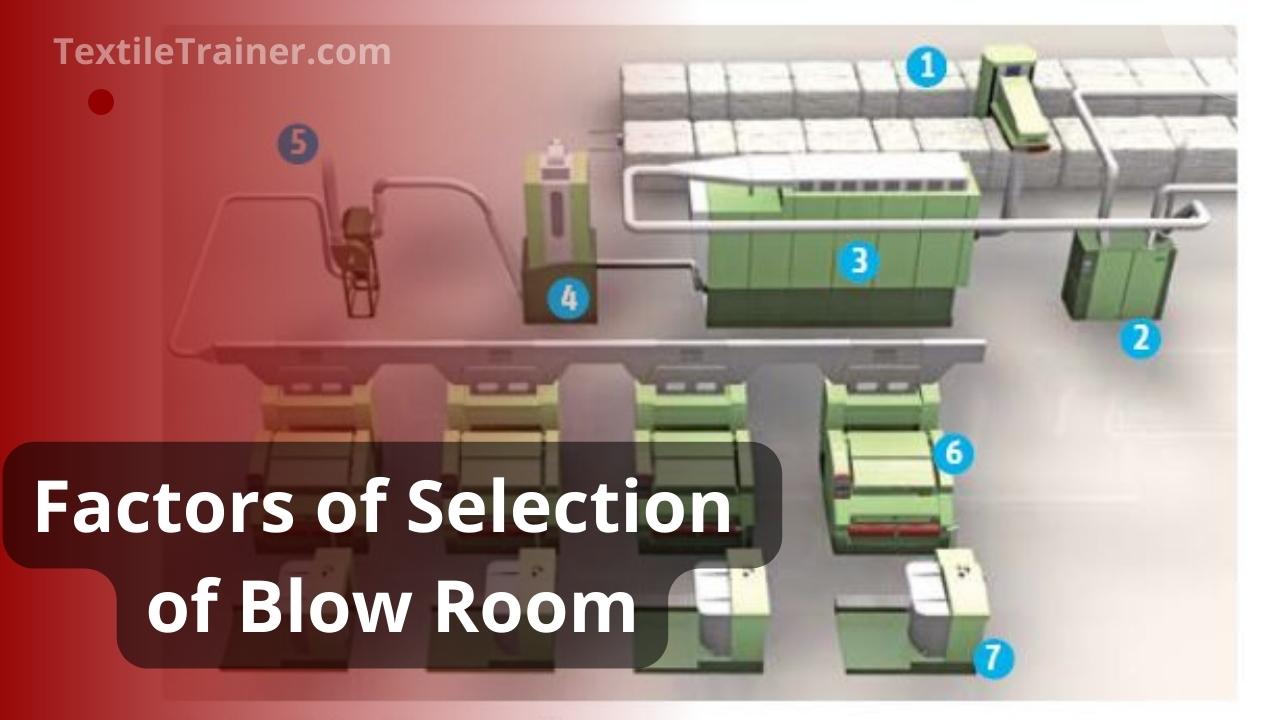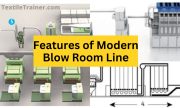The selection of blow room installations in textile manufacturing plays a crucial role in determining the overall efficiency and productivity of the production process. It is crucial for textile manufacturers to consider several key factors before making their decision in light of the numerous options available on the market. During this article, we will examine four factors that significantly influence how blow rooms are selected. Manufacturers can make informed decisions that align with their specific production requirements and objectives if they understand these factors in an easy and straightforward manner. Hence, let’s examine the essential factors governing textile manufacturing blow room installations.

Factors of Selection of Blow Room Installation:
Choosing the right machinery for a blow room line depends on a number of factors. These can be summarized as follows:
1. The Profile of Raw Materials:
The profile of raw material denotes the specification of raw material like type of fiber (natural or synthetic) and the characteristics of raw material, such as fiber length (short staple or long staple), trash content (high trashy cotton or low trashy cotton). The number of beating points in a blow room line is reduced for synthetic fiber, along with the type of beating point (wire) profile that is less aggressive to prevent fiber damage. For long staple fibers, only a pre-cleaner is used, rather than a fine cleaner for short and medium staples. Technical management can be used to process fibers with higher trash percentages, e.g. wider grid bars, higher beater speeds, higher suction pressures. The fibers with higher trash contents can also be processed using cleaning points with more cleaning rolls, such as CL-C4 instead of CL-C3, the cleanomat system from Truetschschler.
2. The Profile of Yarn:
Yarn profiles indicate the type of yarn (carded or combed yarns as well as woven or knitted yarns). Combed yarns should be treated in the blow room very gently, and less beating point should be chosen to achieve better softness and hand feel. Because knitted yarn requires more opening and cleaning action than woven yarn in the blow room section, more beating points are chosen for knitted yarn in the blow room line.
3. The Profile of Composition of Raw Material:
The profile of composition of raw material describes the composition of different origins of the material (e.g. polyester and cotton) used in a given blow room mixing and different status of the same raw material (e.g. sliver waste and virgin material). It is possible to select machines for a blow room line differently based on their origin profile.
4. The Spinning System:
The machinery in a blow room line will depend on the spinning system. For example, rotor spinning is very sensitive to dust & micro dust, so it requires extensive cleaning in the blow room. A rotor spinning system requires a higher cleaning roll and a more intensive cleaning action in the blow room line than a ring spinning system in this regard.
5. Production Capacity:
The desired production capacity is a vital consideration when selecting a blow room installation. Manufacturers need to assess their current and future production requirements to determine the appropriate capacity of the blow room installation. It involves evaluating factors such as the volume of raw material processing, production targets, and market demand. Manufacturers can avoid underusing or overburdening blow room installations by accurately estimating the required capacity.
Conclusion:
Achieving success in textile manufacturing requires the right blow room installation tailored to specific requirements and objectives. It is more likely for manufacturers to experience smooth operations, increased productivity, and superior product quality if these key factors are prioritized in their decision-making process.
References:
- Chowdhury, M. F. (2016). Manual of Short Staple Spinning. Dhaka: Granthanir Prokashoni.
- Corbman, D. P. (1983). Textiles Fiber to Fabric. NewYork: Mary McGarry.
- Hossain, M. S. (2014). Introduction to Textile Engineering. Dhka: Books Fair Publications.
- Kadolph, S. J. (2006). Textiles. New Delhi: Dorling Kindersley India Pvt. Ltd.
- Klein, W. (2016). The Rieter Manual of Spinng, Volume-II. Wintherthur: Rieter Machine Works Ltd.






